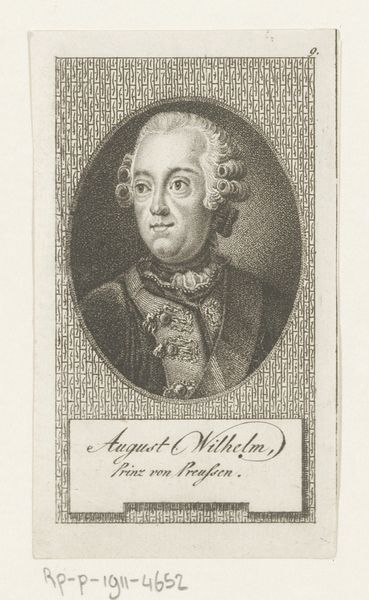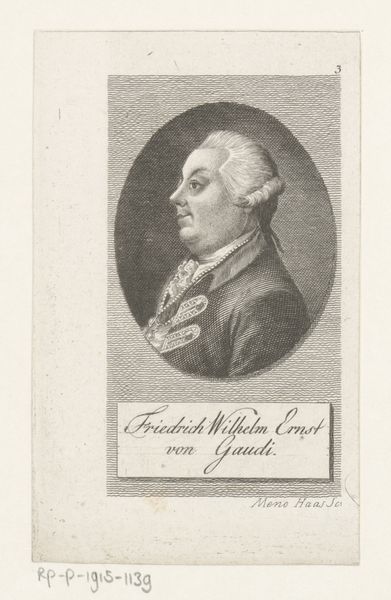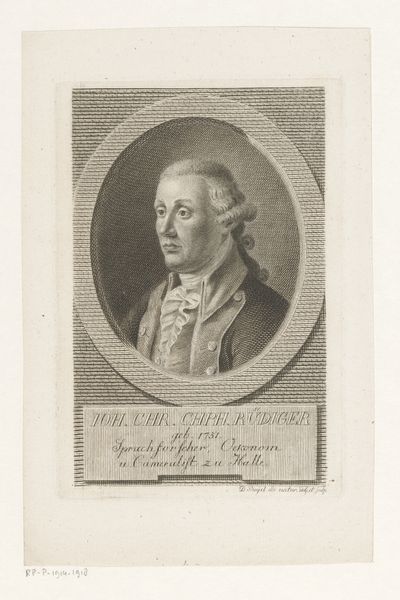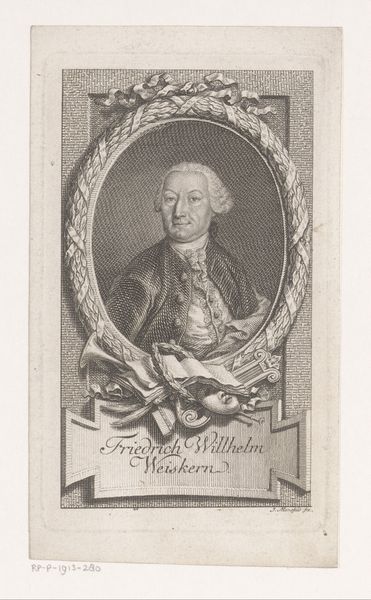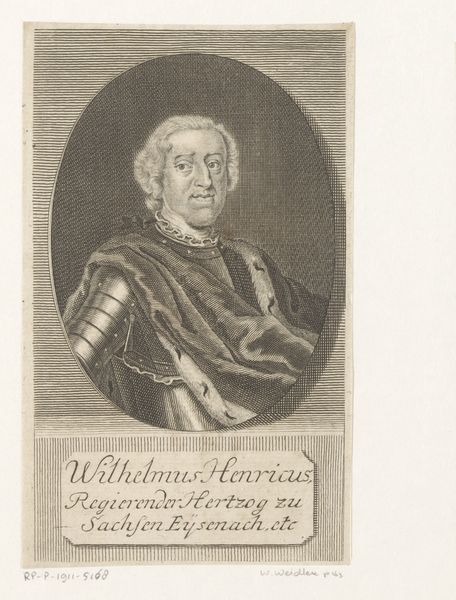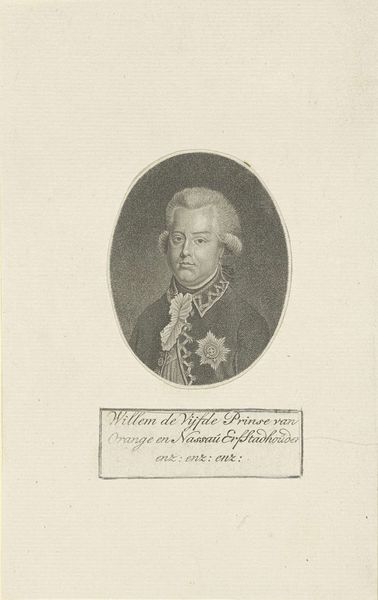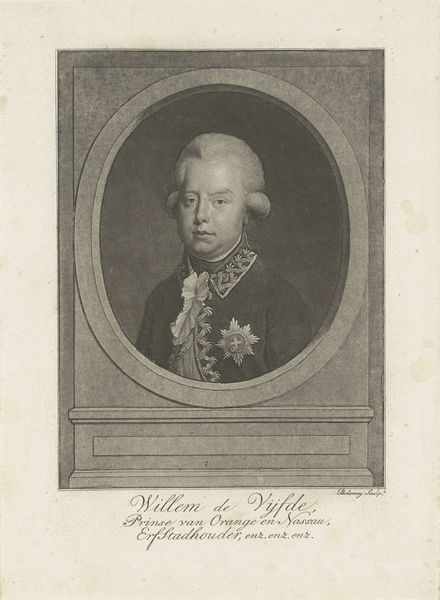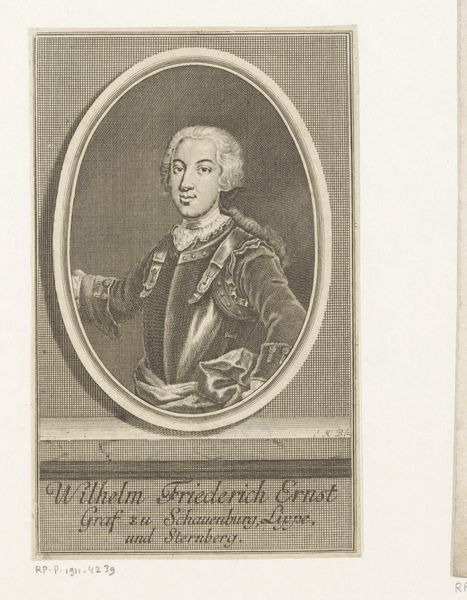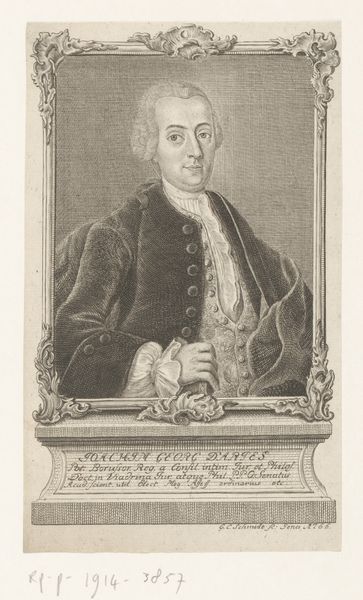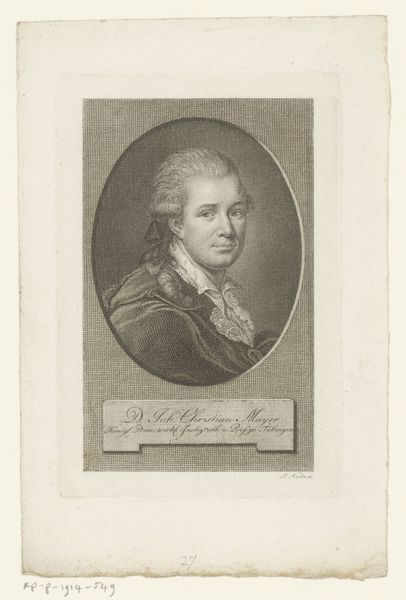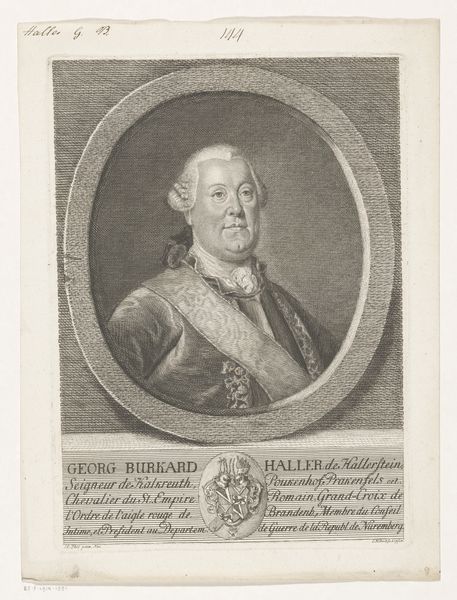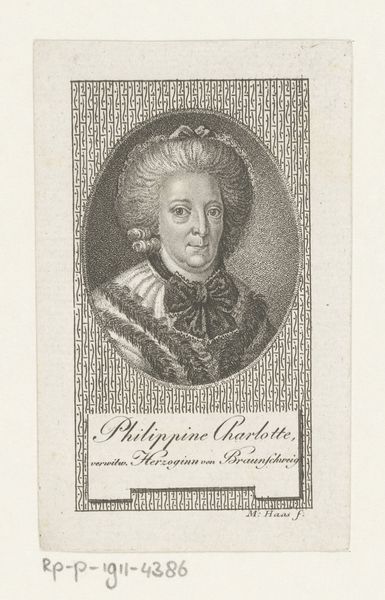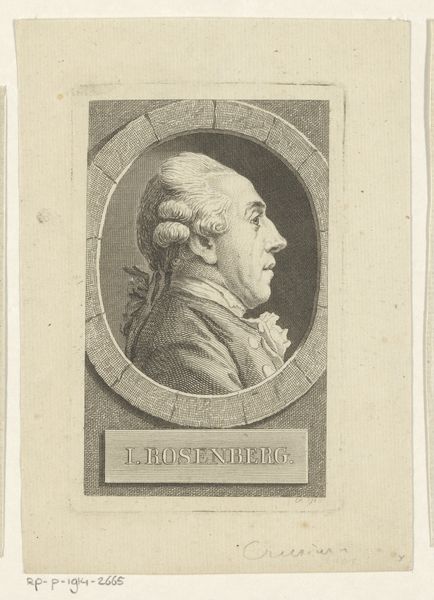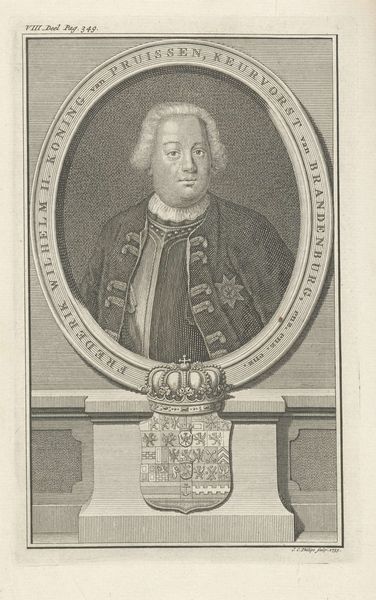
Dimensions: height 109 mm, width 65 mm
Copyright: Rijks Museum: Open Domain
Editor: Here we have "Portret van Frederik Willem I" or "Portrait of Frederick William I," a print made sometime between 1762 and 1833 by Meno Haas. The details are incredible given the medium! I am especially curious about the process of creating this print, and what was considered of value during that time period. What do you make of this piece? Curator: Looking at this engraving, I’m struck by the process and materials used. Consider the labor involved in producing these prints – the skilled hand needed to carve the image into a metal plate, the repetitive work of inking and pressing to create multiple copies. This wasn't just about depicting Frederick William; it was about disseminating his image, manufacturing his persona for a wider audience. Who had access to it, who bought it and what they use it for is a vital information to understand how powerful print industry became at the time. Editor: That makes sense! So, the act of creating the print itself is a statement about power and accessibility? Curator: Exactly. The choice of engraving also points to a certain value placed on precision and permanence. This wasn't a fleeting image; it was meant to endure, to project an image of strength and authority for the Prussian monarchy that had to be spread around the empire and the continent. Also, have a look at the ornamental texture on top. I bet those were prefabricated modules that enabled further cutting down the labor needed and helped ensure consistency across many copies. What kind of social dynamics this image created? Editor: Interesting perspective! So, by looking at the materials and method, we can understand a lot more about the image's cultural context. I had not thought of it in this way before. Curator: Indeed, this changes how one values art beyond what is represented in the portrait, don’t you agree?
Comments
No comments
Be the first to comment and join the conversation on the ultimate creative platform.
